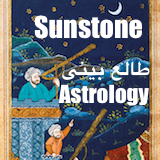The New Yorker:
Touted in our first issue: A love-crazed soldier, scheming septuagenarians, an Anglo-French chastity plot, and a suspected nymphomaniac with a taste for fast cars.
By Thomas Mallon
Several months before the first issue of The New Yorkerappeared, Harold Ross’s fund-raising prospectus promised, along with much else, that “Judgment will be passed upon new books of consequence.” The publication’s literary coverage would take a while to settle down into the distinct critical sensibilities of Dorothy Parker and Clifton Fadiman, and at the start “books of consequence” were something noticed haphazardly “The Great Gatsby,” for example, received more attention for its theatrical adaptation in 1926—“a play of shrewd, hard humor, of self-respecting sentiment”—than for its appearance as a novel, a year earlier.
Much of the magazine’s earliest book reviewing was written under the byline Touchstone, who was actually a man named Harry Este Dounce. It’s hard now for a reader to perceive Touchstone’s own touchstones, to discern a critical standard beyond his own struggle to figure out who this new publication’s readers might or ought to be. In the first issue, of February 21, 1925, he sort of recommends “Those Barren Leaves,” by Aldous Huxley—if, that is, “you like your novels professionally clever and intellectual.” Late in November, reviewing John Dos Passos’s “Manhattan Transfer,” Dounce felt compelled to note that the author’s Manhattan “is not the hypothetical typical New Yorker reader’s,” though he did find it to be “very much like the real, complete thing—which is to say, like a hell of chaotic futility.”
Go to link










Comments